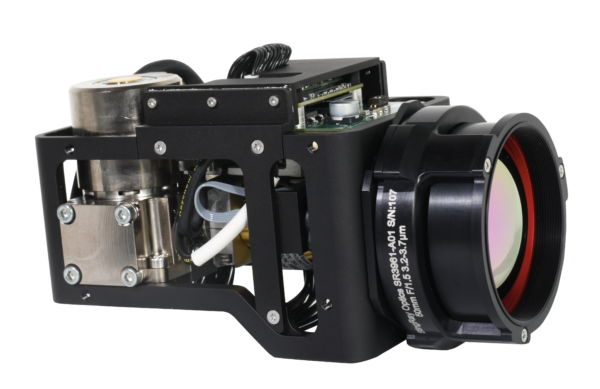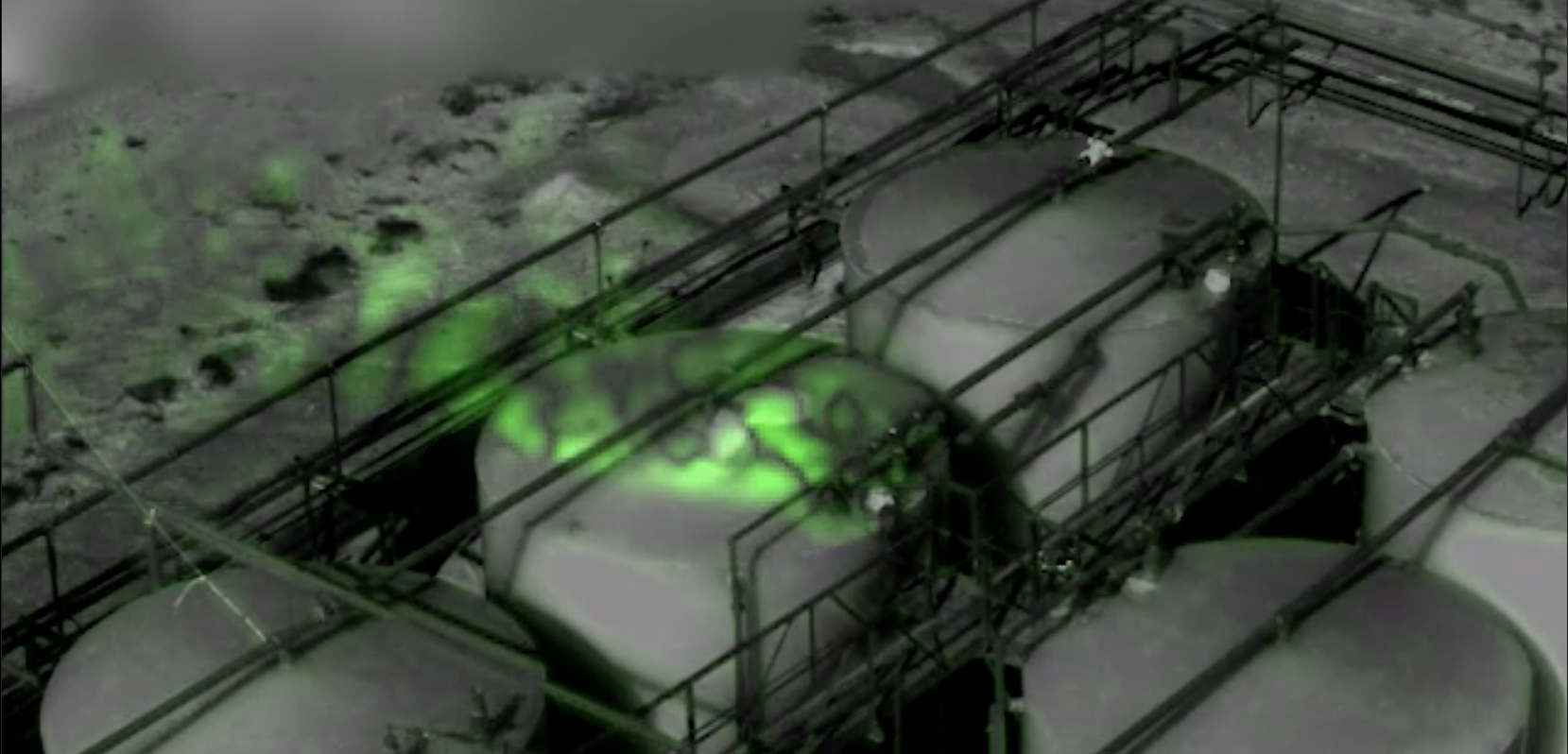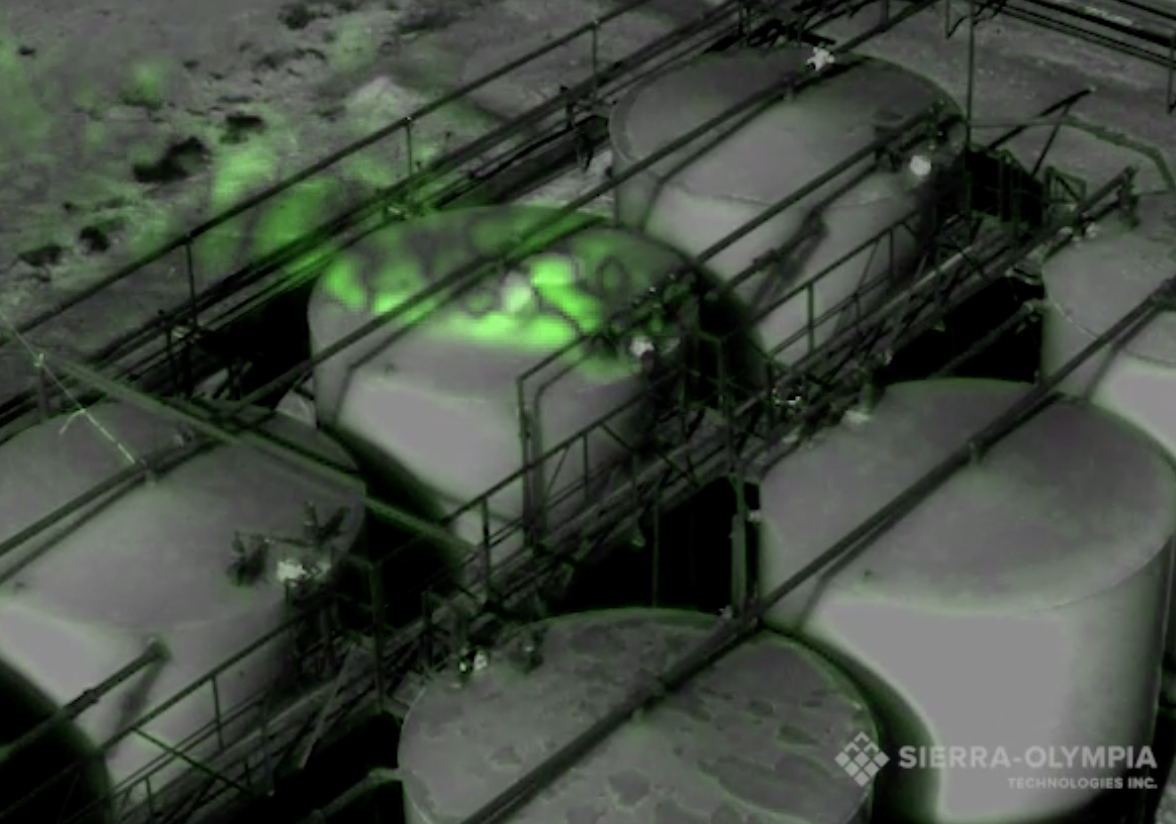Last modified on April 26th, 2024 at 4:55 pm
Findings signal bright future for gas leak detection from fixed-wing aircraft
Sierra-Olympic Technologies recently teamed up with technology partner, Eagle Pods, in a successful test case that delivered the first known footage visualizing hydrocarbon gas leaks (propane and propane/methane) from 1,000 ft. AGL, from a manned, fixed wing aircraft.
The test, held in Permian Basin area of west Texas, incorporated Sierra-Olympic’s Ventus OGI thermal camera into a two-axis gimbal, facing aft of the aircraft. A series of propane and methane tanks were staged across a variety of terrain profiles and were turned on at measured flow rates as the aircraft flew overhead.
The combination of the camera’s industry-leading 640 x 512 resolution, the sensitivity of its cooled MWIR sensor and its purpose built 50 mm (11°) f/1.5 optic resulted in clear and consistent visualization of gas plumes from 500, 700 and 1,000 ft AGL.
As far as we know, this is the first successful test of its kind.
Jeff Leake, Sierra-Olympia VP of Sales

“As far as we know, this is the first successful test of its kind,” said Jeff Leake, Sierra-Olympia VP of Sales, who helped facilitate the trial. “This is an important development in optical gas imaging because it demonstrates the ability to detect and visualize hydrocarbon gas leaks from distances that have not been seen before.”
A successful test case above the 1,000ft. AGL benchmark is important because that’s the threshold in which airborne inspections can be done over populated areas without flight waivers. The ability to fly at farther distances and cover the linear miles capable from a fixed-wing aircraft, while still conducting effective inspections and collecting actionable imagery, has the potential to save those involved significant time, money and resources.
One important advantage optical gas imaging, and in particular the 640 x 512 resolution Ventus OGI, provides over non-visual means of leak detection is the ability to quickly and clearly identify the point source. Instead of simply detecting gas in a general region and having to send in a crew to investigate, inspectors can clearly see where gas is emitting from and, in most cases, get a general idea of flow based on the size and intensity of the gas cloud.
Sierra-Olympic originally released the Ventus OGI with a single, 25 mm (21.7°) lens model and released the narrower 50 mm option in 2021 for longer-distance and higher-altitude applications.


